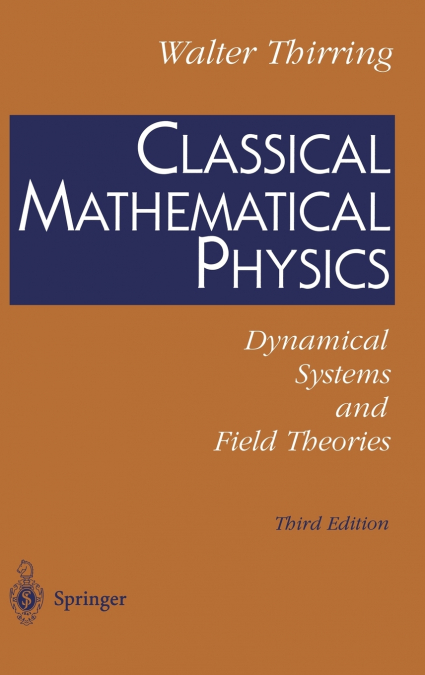
Walter Thirring / E.M. Harrell
I Classical Dynamical Systems.- 1 Introduction.- 1.1 Equations of Motion.- 1.2 The Mathematical Language.- 1.3 The Physical Interpretation.- 2 Analysis on Manifolds.- 2.1 Manifolds.- 2.2 Tangent Spaces.- 2.3 Flows.- 2.4 Tensors.- 2.5 Differentiation.- 2.6 Integrals.- 3 Hamiltonian Systems.- 3.1 Canonical Transformations.- 3.2 Hamilton’s Equations.- 3.3 Constants of Motion.- 3.4 The Limit t ? ±?.- 3.5 Perturbation Theory: Preliminaries.- 3.6 Perturbation Theory: The Iteration.- 4 Nonrelativistic Motion.- 4.1 Free Particles.- 4.2 The Two-Body Problem.- 4.3 The Problem of Two Centers of Force.- 4.4 The Restricted Three-Body Problem.- 4.5 The N-Body Problem.- 5 Relativistic Motion.- 5.1 The Hamiltonian Formulation of the Electrodynamic Equations of Motion.- 5.2 The Constant Field.- 5.3 The Coulomb Field.- 5.4 The Betatron.- 5.5 The Traveling Plane Disturbance.- 5.6 Relativistic Motion in a Gravitational Field.- 5.7 Motion in the Schwarzschild Field.- 5.8 Motion in a Gravitational Plane Wave.- 6 The Structure of Space and Time.- 6.1 The Homogeneous Universe.- 6.2 The Isotropic Universe.- 6.3 Me According to Galileo.- 6.4 Me as Minkowski Space.- 6.5 Me as a Pseudo-Riemannian Space.- II Classical Field Theory.- 7 Introduction to Classical Field Theory.- 7.1 Physical Aspects of Field Dynamics.- 7.2 The Mathematical Formalism.- 7.3 Maxwell’s and Einstein’s Equations.- 8 The Electromagnetic Field of a Known Charge Distribution.- 8.1 The Stationary-Action Principle and Conservation Theorems.- 8.2 The General Solution.- 8.3 The Field of a Point Charge.- 8.4 Radiative Reaction.- 9 The Field in the Presence of Conductors.- 9.1 The Superconductor.- 9.2 The Half-Space, the Wave-Guide, and the Resonant Cavity.- 9.3 Diffraction at a Wedge.- 9.4 Diffraction at a Cylinder.- 10 Gravitation.- 10.1 Covariant Differentiation and the Curvature of Space.- 10.2 Gauge Theories and Gravitation.- 10.3 Maximally Symmetric Spaces.- 10.4 Spaces with Maximally Symmetric Submanifolds.- 10.5 The Life and Death of Stars.- 10.6 The Existence of Singularities.